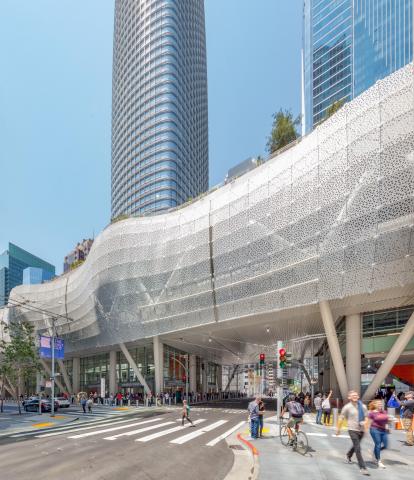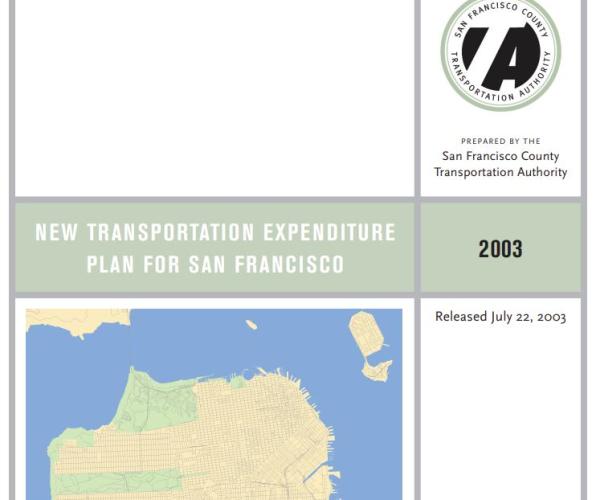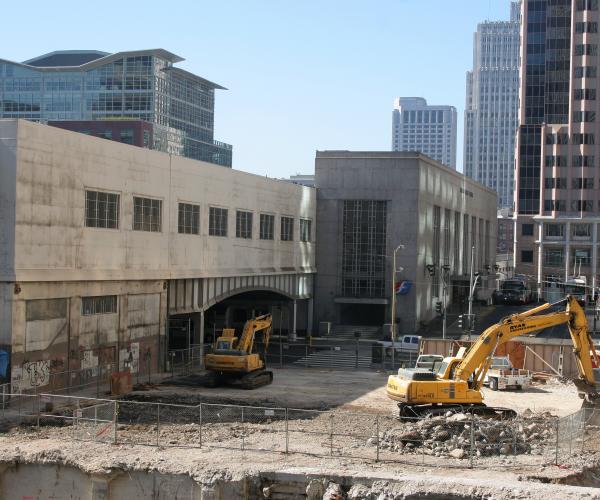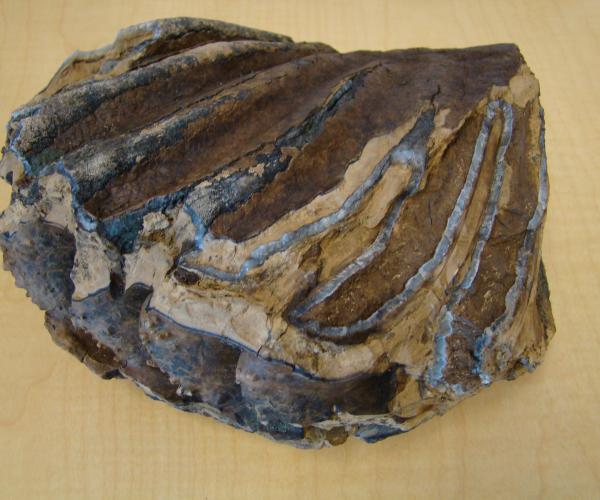The Transbay Program is based on a legacy of improving connections across the Bay Area and providing service to millions of people who come to live in and visit the region. From the “Bayshore Cut-Off” opening in 1907 that give Southern Pacific trains a quick route into San Francisco to the original Transbay Terminal in 1939 that accommodated rail service over the Bay Bridge for more than 26 million annual passengers, the milestones of the past century set the tracks for the opening of the Salesforce Transit Center and the next stage: completing The Portal.
Program timeline
Decades
-
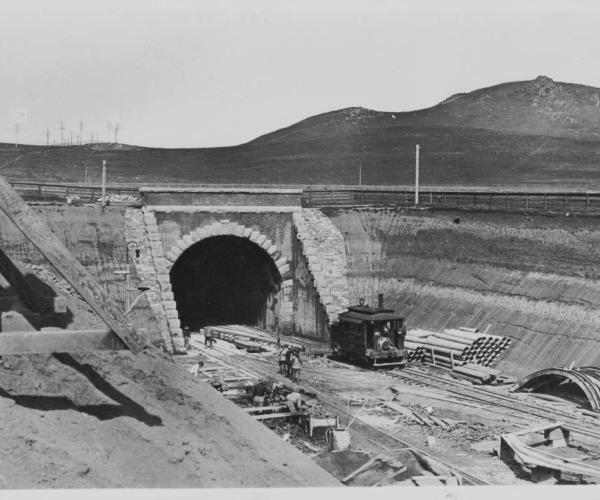 1907-1967
1907-1967The “Bayshore Cut-Off” opens, giving Southern Pacific trains a quick route into San Francisco.
-
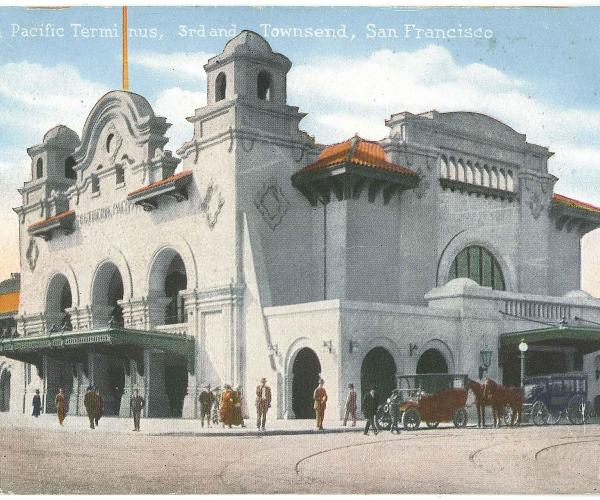 1907-1967
1907-1967A temporary terminal constructed for Southern Pacific passenger service at Third & Townsend streets, to be completed in time for 1915 World’s Fair; plans are made to bring trains to a new terminal in downtown San Francisco, but are never realized.
-
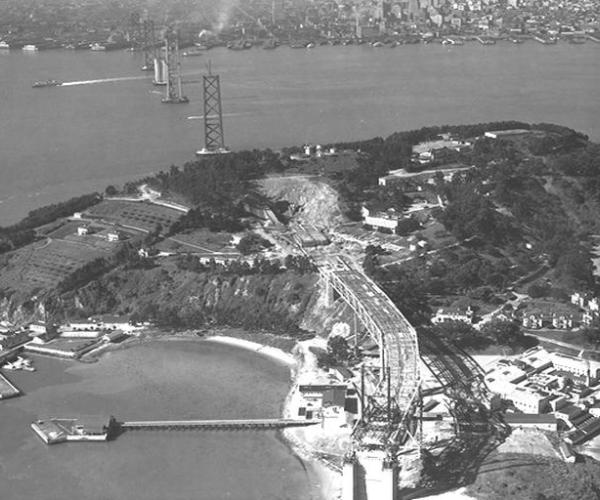 1907-1967
1907-1967The Hoover Commission selects Rincon Hill to Oakland Mole, via Yerba Buena Island, as a route for the Bay Bridge.
-
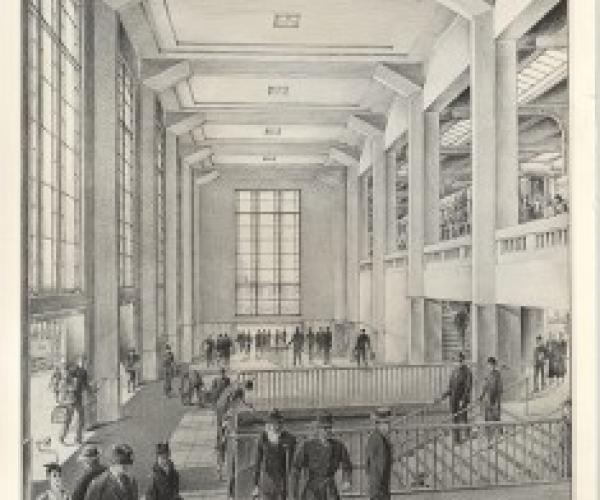 1907-1967
1907-1967A site is selected for the Transbay Terminal rail services in downtown San Francisco. The new site at First and Mission streets is selected because it is the closest option near the center of activity in downtown San Francisco and connects to the new Bay Bridge.
Photo courtesy of The Bay Bridge (Images of America) by Paul C. Trimble and John C. Alioto, Jr.
-
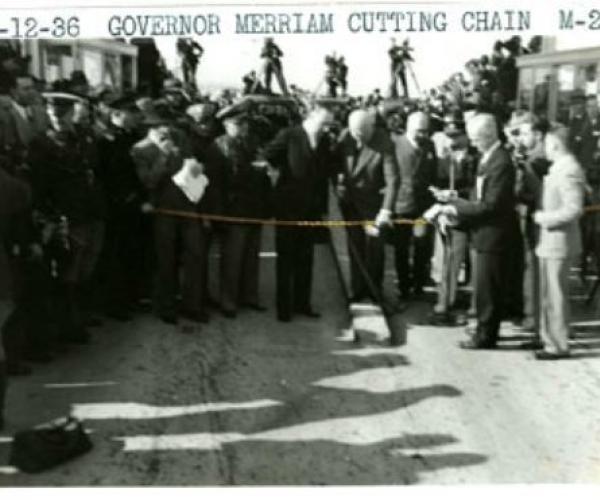 1907-1967
1907-1967In 1936, the San Francisco-Oakland Bay Bridge opens. The construction of railway facilities is delayed while a cost-sharing plan is debated among state toll bridge authority and private railways.
-
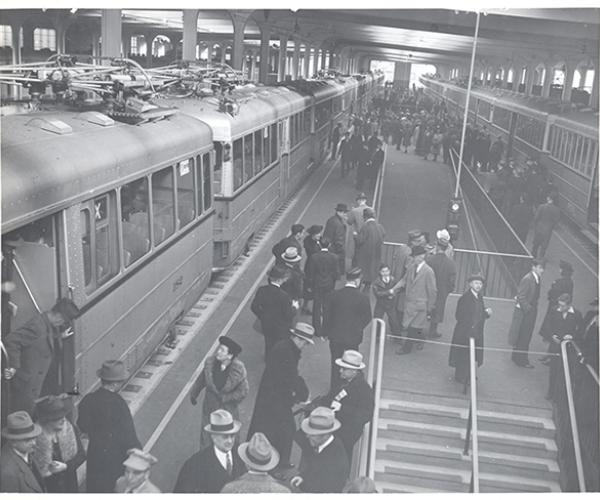 1907-1967
1907-1967The Transbay Terminal is built in 1939 to accommodate rail service over the San Francisco-Oakland Bay Bridge. In its heyday, more than 26 million people used the Transbay Terminal each year.
Photo courtesy of The Bay Bridge (Images of America) by Paul C. Trimble and John C. Alioto, Jr.
-
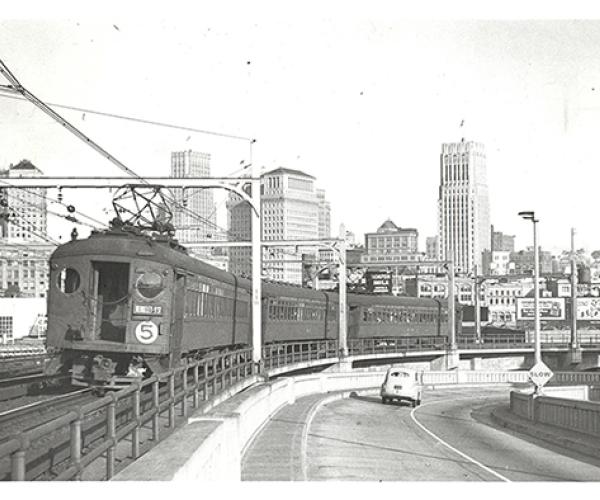 1907-1967
1907-1967Southern Pacific Railway “Red Trains” cease operation to the Transbay Terminal.
Photo courtesy of The Bay Bridge (Images of America) by Paul C. Trimble and John C. Alioto, Jr.
-
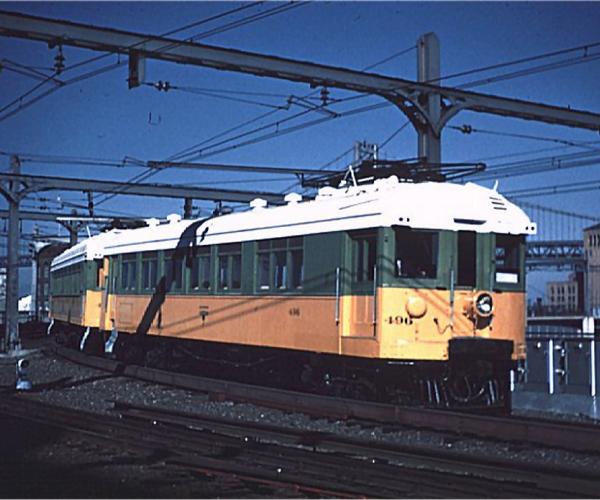 1907-1967
1907-1967Following World War II and the prevalence of the automobile, rail travel began to decrease. The final Key System train left the Terminal in 1958. The railway is removed from the lower deck of the Bay Bridge.
-
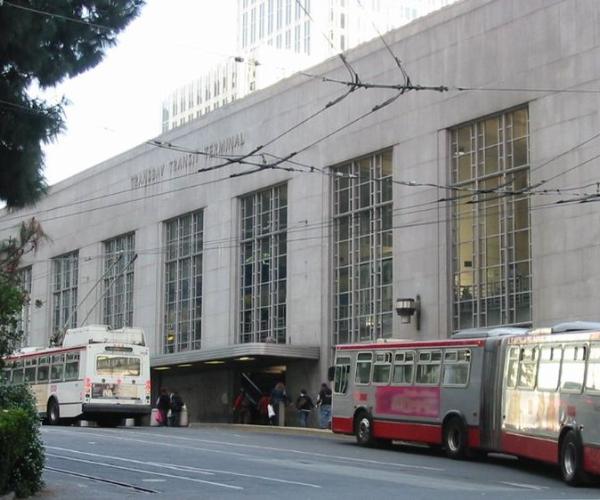 1907-1967
1907-1967The Transbay Terminal is converted to a bus-only facility when the Key System rail stops running on the lower deck of the Bay Bridge. AC Transit begins utilizing the Terminal deck and ramps, along with other local and long-distance bus carriers.
-
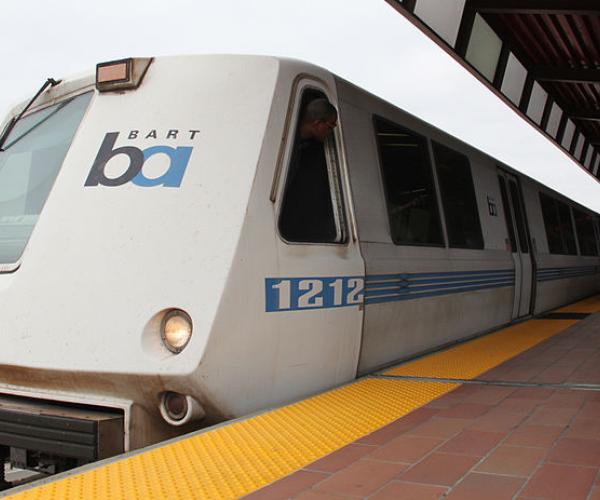 1907-1967
1907-1967Caltrans begins study to determine future role of Transbay Terminal once Transbay BART service begins.
-
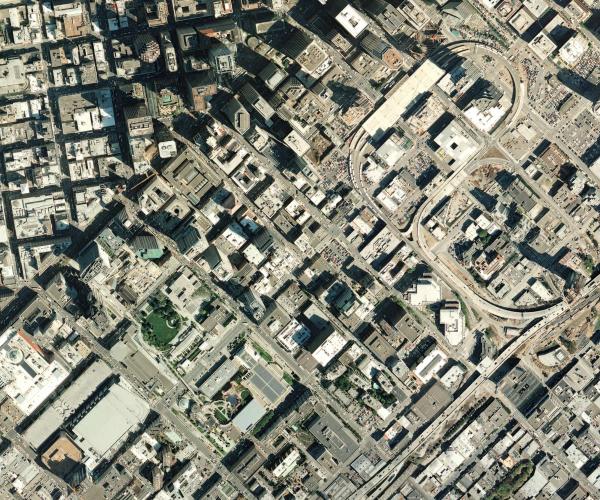 1970-1989
1970-1989Final report is issued and favors demolition of existing terminal with construction of a new regional transportation center to serve both commuters and long-distance passengers plus three million square feet of private development in air rights above the terminal.
-
1970-1989
Transbay Transit Terminal Transportation Study released, calling for terminal with off-street facilities for all bus operators; peak capacity in new terminal would be 630 buses per hour, with direct ramps to Bay Bridge and US-101.
-
1970-1989
SFBATTA established to oversee operations and planning of the Transbay Terminal. San Francisco’s railway terminal is moved a block farther from downtown, to Fourth & Townsend streets, to make way for a freeway off-ramp that is never constructed.
-
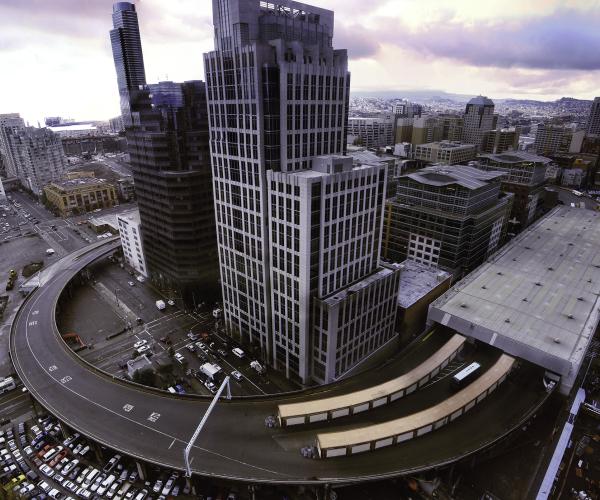 1970-1989
1970-1989San Francisco Bay Area Transportation Terminal Authority (SFBATTA) study concludes; lowest-cost option is implemented, a minimal upgrade of the terminal.
-
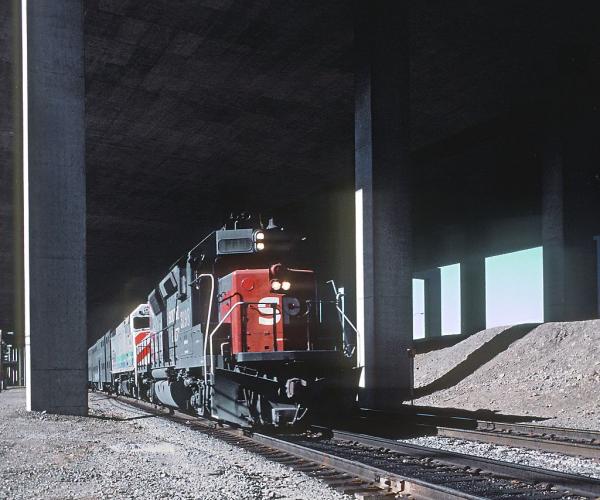 1970-1989
1970-1989Caltrans takes over responsibility for the operation of the century-old Southern Pacific commuter service between San Francisco and San Jose, renaming it “Caltrain.”
-
1970-1989
Caltrans, as part of its responsibility for operating new Caltrain commuter service, develops plans to extend railway to Transbay Terminal.
-
1970-1989
Metropolitan Transportation Commission approves Resolution 1876, calling extension of Caltrain to downtown San Francisco a top regional priority.
-
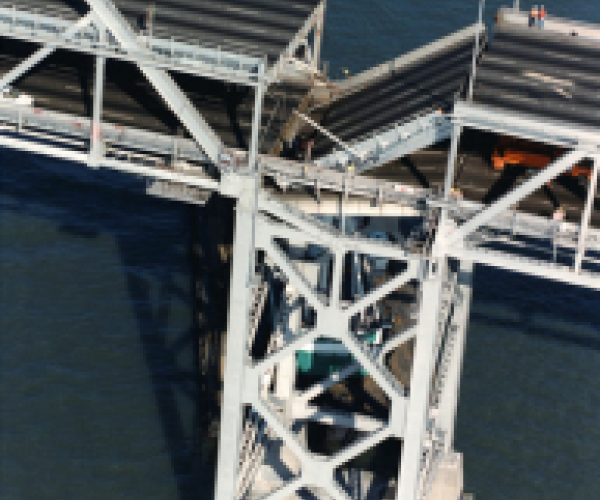 1970-1989
1970-1989The Loma Prieta earthquake rocks San Francisco in 1989, damaging the Transbay Terminal and surrounding freeway ramps.
Caltrans’ Office of Structural Design completes designs for major revitalization of existing terminal, to bring the building up to current accessibility and life-safety codes.
-
1990-1999
The administrative Draft of Caltrain Downtown Extension is released. Alternatives considered include a six-track terminal underground behind the Transbay Terminal, and a three-level underground terminal beneath Second Street at Market Street. The study never progresses due to lack of a funding plan, but provides the basis for continued study of extending Caltrain into downtown San Francisco.
-
1990-1999
Mayor Frank Jordan asks Caltrans to consider removing Transbay Terminal and replacing it with a smaller terminal.
Peninsula Corridor Joint Powers Board takes over Caltrain operations from Caltrans.
-
1990-1999
The San Francisco Planning Department releases a Transit Terminal Study suggesting a location for the new terminal.
-
1990-1999
The Caltrain San Francisco Downtown Extension/Systems Upgrades Final Report is issued. Options considered include surface operation of Caltrain into the South of Market Area (SOMA) all the way to Market Street.
-
1990-1999
Transit Terminal Decision Report prepared, presenting three options for location of a new terminal.
-
1990-1999
Draft EIS/EIR for the Caltrain San Francisco Downtown Extension Project released but never certified.
-
1990-1999
As part of seismic work to retrofit the Bay Bridge ramps, Caltrans proposes to eliminate the eastern ramp into the Transbay Terminal.
-
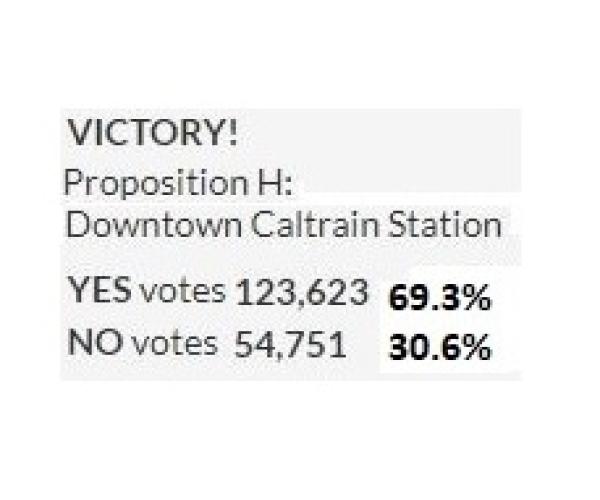 1990-1999
1990-1999Proposition H is overwhelmingly adopted by San Francisco voters, which makes it City law to extend Caltrain tracks to a new or rebuilt regional transit station on the site of the Transbay Terminal, and to pursue other improvements.
-
2000-2004
The Transbay Program is included in the Metropolitan Transportation Commission’s Regional Transit Expansion Policy (MTC Resolution 3434) and the Regional Transportation Plan.
-
2000-2004
Executive Committee of the Transbay Terminal Improvement Study Panel publishes design concept for new Transbay Terminal, an inter-modal bus and rail transit station to serve the Bay Area and the State. The plan also includes development of certain surrounding parcels and envisions a new transit-oriented neighborhood with retail, offices, and 3000 residential units.
-
2000-2004-
The City & County of San Francisco and Peninsula Corridor Joint Powers Board execute a Memorandum of Understanding (MOU) to be co-lead agencies for the Caltrain extension project.
The Bay Area Toll Authority and the Transbay Terminal Improvement Study Panel select the preferred design for the new terminal: stacked configuration with Caltrain and high speed rail underground, joint use at ground level and on a mezzanine, two levels of bus bays and dedicated ramps connecting the bus decks to the Bay Bridge; the Plan is the result of a lengthy consensus-building design process that included needs of all operators.
-
2000-2004
The Metropolitan Transportation Commission’s Bay Crossings Study begins to examine options for providing additional capacity across the bay. The study covers an area from San Francisco to Silicon Valley and includes all modes.
-
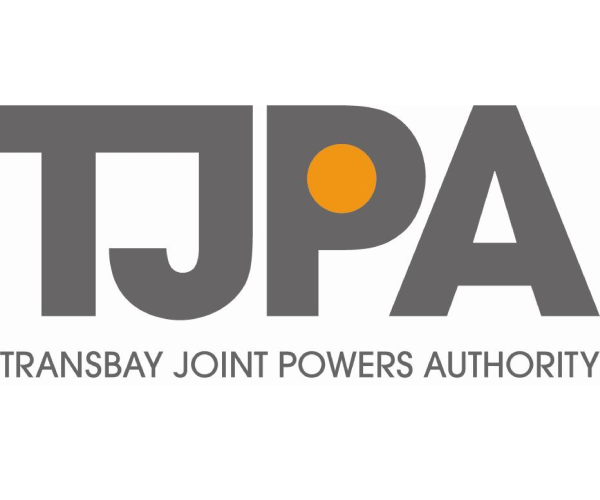 2000-2004
2000-2004City & County of San Francisco, AC Transit, and Peninsula Corridor Joint Powers Board enter into an agreement creating the Transbay Joint Powers Authority (TJPA), with a five-person Board of Directors.
-
2000-2004
Draft EIS/EIR published and released for public review and comments followed by Public Hearings held by the San Francisco Redevelopment Agency.
-
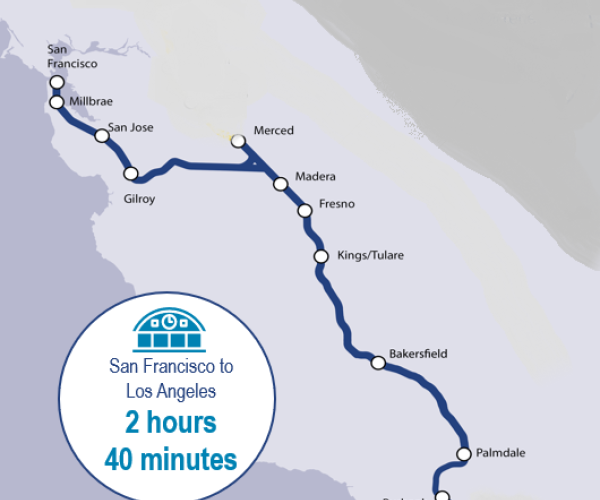 2000-2004
2000-2004California Senate Bill 1856 requires that initial segment of California High-Speed Rail connect San Francisco Transbay Terminal and Los Angeles Union Station.
-
2000-2004
San Francisco voters pass Proposition K, a half-cent sales tax extension for transportation, which earmarks $270 million for Transbay Terminal/Caltrain Downtown Extension Program as long as the project includes the extension of Caltrain. California Senate Bill 916 sets foundation for Regional Measure 2, the Regional Traffic Relief Plan.
-
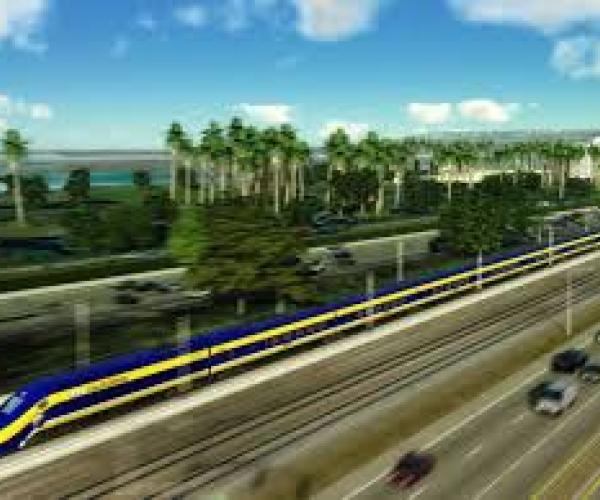 2000-2004
2000-2004State legislation passes which requires 35 percent affordable housing in the new Transbay Redevelopment Area and that the new Transbay Terminal at First and Mission streets be designed to accommodate bus, Caltrain and high-speed rail.
-
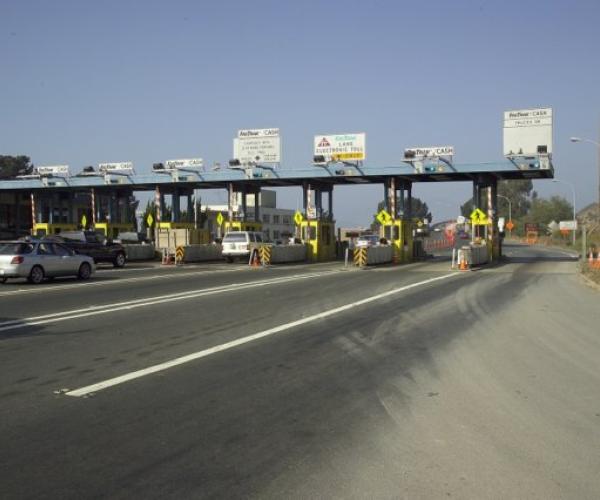 2000-2004
2000-2004Regional Measure 2 bridge toll increase is approved by Bay Area voters and allocates $150 million in project funding.
-
2000-2004
Design for Development Plan receives an Urban Design Award from the American Institute of Architects.
-
2000-2004
RFP issued for Engineering Design Services for the Caltrain Downtown extension (DTX) Project. Contract awarded to Parsons/ARUP/Jacobs Associates in December 2004.
-
2000-2004
Selection of Locally Preferred Alternative (LPA) by the TJPA Board facilitates release of approximately $9.3 million in federal and regional funds to continue planning and preliminary design of the Transbay Terminal.
-
2000-2004
TJPA and Peninsula Corridor Joint Powers Board certify the FEIS/EIR and select a Locally Preferred Alternative (LPA) alignment into downtown San Francisco.
-
2000-2004
San Francisco Board of Supervisors certifies FEIS/EIR.
-
2005-2009
The TJPA begins preliminary engineering work on the Transbay Terminal Project.
-
2005-2009
Federal Transit Administration issues Record of Decision (ROD), confirming that the Transbay Terminal Project has satisfied all of the requirements of the National Environmental Policy Act of 1969 (NEPA) and completed the extensive federal environmental review process.
Record of Decision: Issued February 8, 2005
Appendix A: Mitigation Monitoring Program
Appendix B: Memorandum of Agreement with FTA and State Historic Preservation Officer (SHPO)
Appendix C: Summary of Public Comment
Appendix D: Executed Project Development Agreement
-
2005-2009
The Redevelopment Plan for the Transbay Terminal Project is adopted by the San Francisco Board of Supervisors. The Redevelopment Plan will transform the area surrounding the new station and create a new Transbay neighborhood with homes, parks and retail.
-
2005-2009
Redevelopment Agency adopts Transbay Redevelopment Plan.
-
2005-2009
The Transbay Transit Center/Caltrain Extension Project receives $55 million in federal funding from the long-awaited federal surface transportation bill, SAFETEA-LU (Safe, Accountable, Flexible, Efficient Transportation Equity Act: A Legacy for Users).
-
2005-2009
-
2005-2009
The TJPA Board adopts a recommended implementation strategy to construct the program in two phases. Phase I includes constructing the station and the train boxes. Phase II includes the Caltrain and future high-speed rail line underground up Second Street into the new built-out train level of the station.
-
2005-2009
The TJPA launches an international competition to select a Design and Development (D/D) Team to design a Transit Center to be developed by the TJPA in downtown San Francisco and to design and develop a Tower adjacent to the Transbay Transit Center.
-
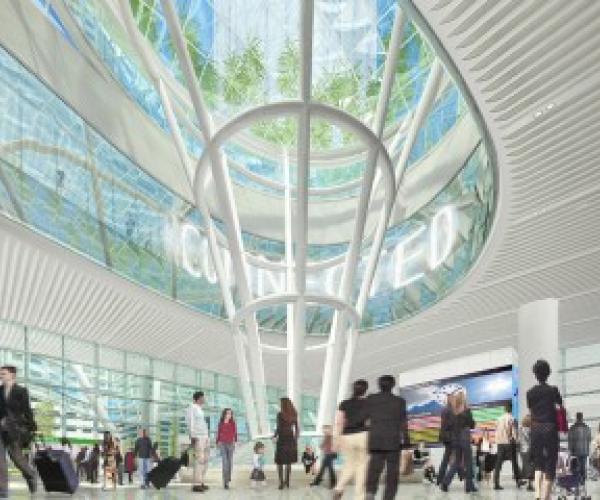 2005-2009
2005-2009Pelli Clarke Pelli Architects and Hines selected as winner of the Design & Development Competition.
-
2005-2009
California Transportation Commission approves transfer of State land parcels to the TJPA, the City of San Francisco, and the SF Redevelopment Agency.
-
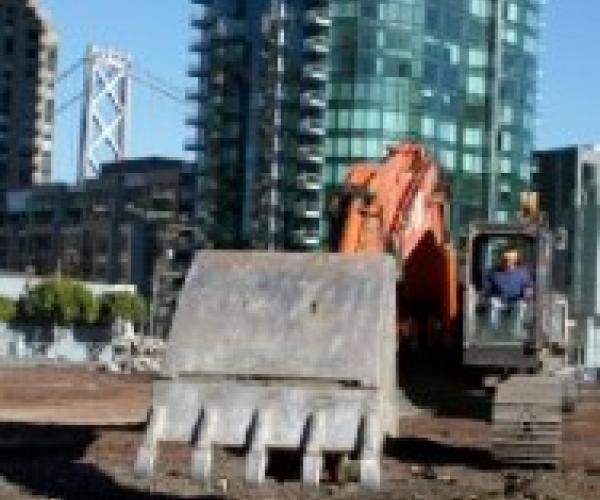 2005-2009
2005-2009Construction of the Temporary Terminal begins in fall 2008. The temporary replacement bus facility will serve bus passengers while the new multi-modal Transbay Transit Center is under construction.
-
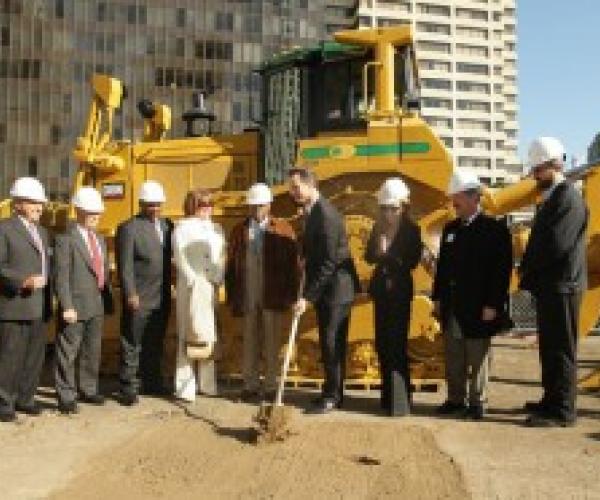 2005-2009
2005-2009A groundbreaking ceremony launches the first step in the Transbay Transit Center program – construction of the Temporary Terminal, the temporary facility that will serve bus passengers while the new landmark Transbay Transit Center is under construction.
-
2010-Present
The second phase of the Temporary Terminal construction begins following demolition of the east loop over the Temporary Terminal site. The removal of this outdated bus ramp allows construction of the Temporary Terminal to be completed and demolition of the Transbay Terminal to begin.
-
2010-Present
Begin demolition of Transbay Terminal. Begin construction of Phase I of the project, including the Transit Center building and Train Box.
-
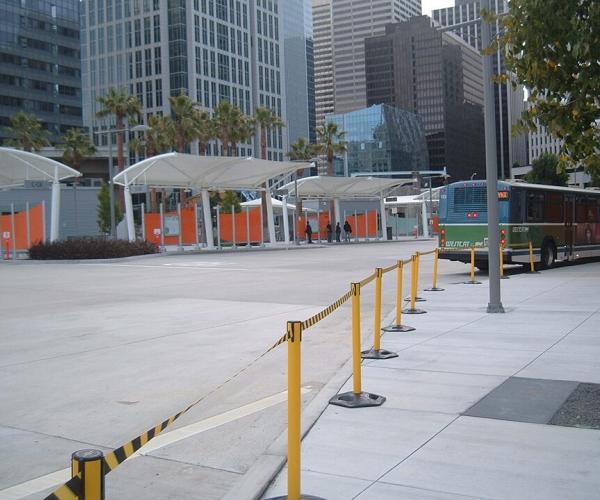 2010-Present
2010-PresentTemporary Terminal opens.
(Photo by Coro - Own work, CC BY-SA 3.0, https://commons.wikimedia.org/w/index.php?curid=11377404 )
-
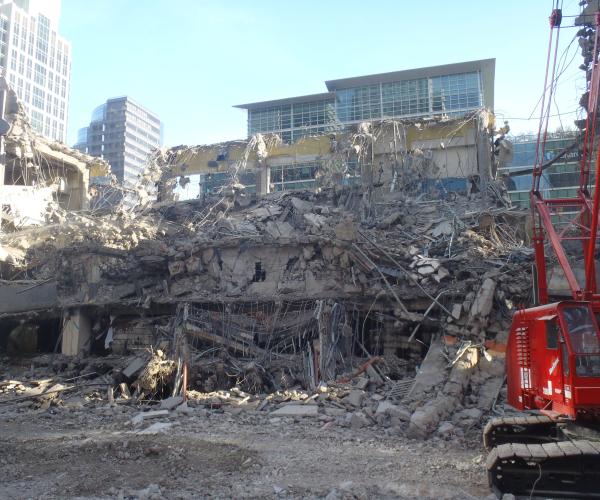 2010-Present-
2010-Present- -
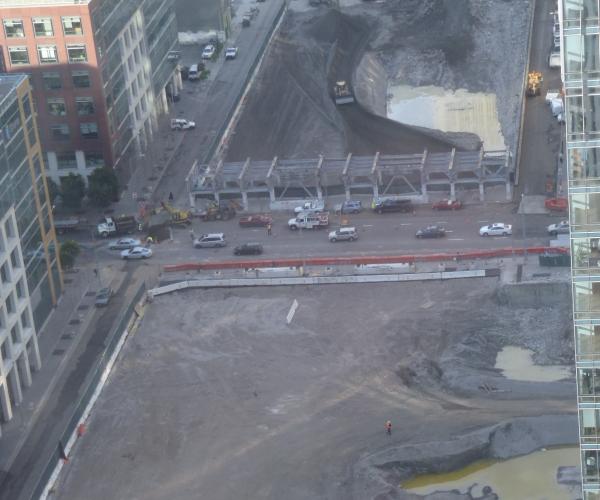 2010-Present
2010-PresentDemolition phase of the Transit Center is completed on time and on budget. Demolition entailed nearly 55,000 hours of labor, all of which were completed without accident or injury. Approximately 88 percent of this work was completed using local labor who worked diligently to recycle more than 7,500 tons of steel and 92,000 cubic yards of concrete—enough to fill 28 Olympic size swimming pools.
-
2010-Present
At an event on the Transbay construction site, Governor Brown signs high-speed rail legislation that will create thousands of new jobs in California by providing $8 billion in funding from Prop 1A for construction of the first segment of high-speed rail and infrastructure upgrades on the Northern and Southern “bookends” in San Francisco and Los Angeles. This includes crucial funding to complete the electrification of Caltrain, which will ultimately serve to bring high speed-rail and Caltrain into the new Transbay Transit Center.
-
2010-Present
The Transit Center District Plan is enacted by the City of San Francisco in order to allow upzoning of certain land parcels in the area surrounding the new Transbay Transit Center and to generate revenues to fund infrastructure in the Transbay neighborhood, including substantial revenues for the Transbay Program.
-
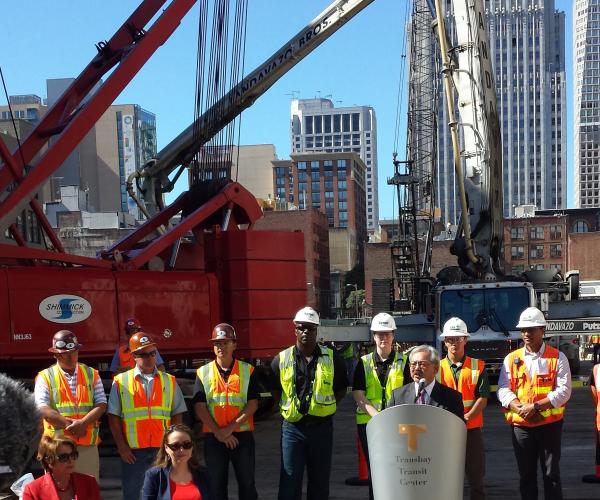 2010-Present
2010-PresentFirst concrete is poured for the permanent foundation for the new facility. The 5-foot thick cement foundation requires 60,000 cubic yards of concrete to cover the excavation. The foundation is poured in 15 segments, each of which requires approximately 4,000 cubic yards of concrete.
-
2010-Present
After two years of work, excavation for the Transbay Transit Center is complete. A total of 640,000 cubic yards of material from digging, trenching and preparation for foundation is removed and leads to the discovery of numerous artifacts, including the tooth of an approximately 12,000 year old Columbian mammoth.
-
2010-Present
Work on the Transbay Transit Center’s new designated Bus Ramp begins with the demolition of existing footings. When complete, the ramp will connect the Transit Center directly to the Bay Bridge, keeping Transbay buses off busy downtown streets, improving bus commute times, and reducing traffic congestion.
-
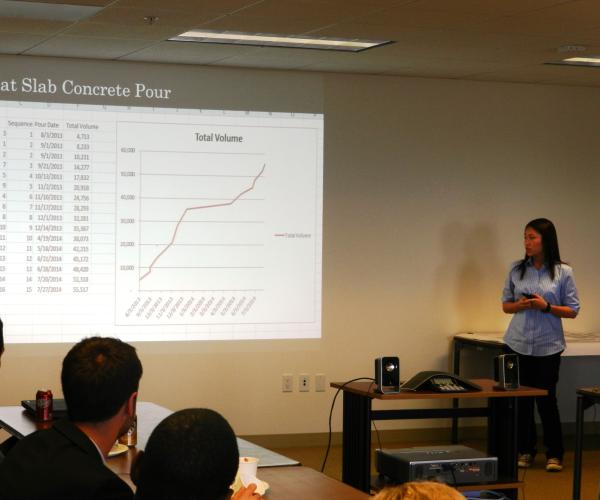 2010-Present
2010-PresentThe foundation of the Transbay Transit Center is completed just 6 years after groundbreaking. The entire 5-foot thick, 4-block long mat slab foundation of the Transit Center is poured in an impressive 13 months.
-
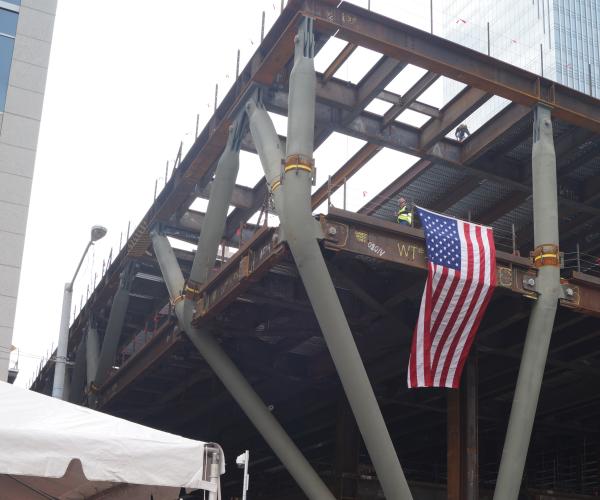 2010-Present
2010-PresentBringing together thousands of steel elements manufactured and shopped at locations throughout the United States, assembly of the Transit Center’s steel superstructure begins in November 2014. The iconic Transbay Transit Center begins to take shape above ground.
-
2010-Present
Mayor Ed Lee signs into law legislation that creates a Mello Roos Community Facilities District (CFD) for the Transit Center District Plan (TCDP) area, which surrounds the new Transit Center. Developers choosing to upzone in the TCDP area must pay a special CFD tax to fund infrastructure needed to support upzoned (i.e. taller) buildings. The CFD represents a major new funding source for the Transbay Transit Center Program.
-
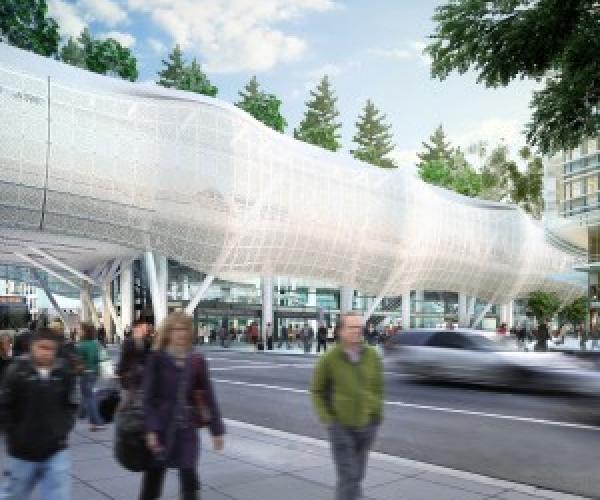 2010-Present-
2010-Present- -
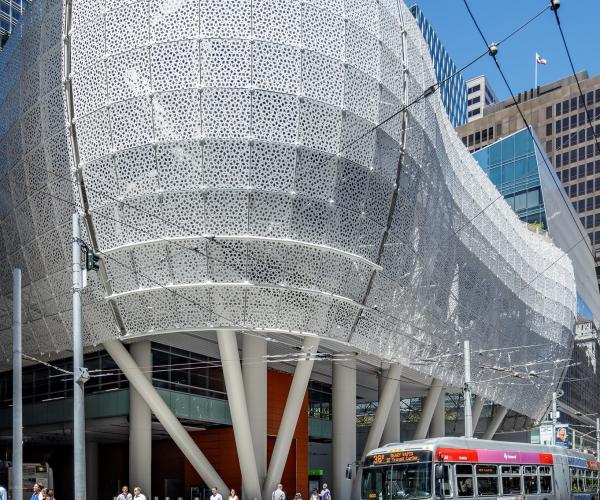 2010-Present
2010-PresentConstruction of the new Transbay Transit Center was completed in 2018, creating a new, 1 million square foot Transit Center with above-grade bus level, ground floor and concourse-level retail and foundations for two below-grade levels to serve Caltrain and future high-speed rail service to Los Angeles.
Evolution
Envision a world class transit hub
The ability to envision the future and to transform aspiration into reality is what sets leaders apart. No urban transit project in the world today exemplifies this fact better than the Transbay Program and the urban transformation it has created. It is on par with the most important transportation projects in the world today.
Through a bold vision, political will, community support, and collaboration between public sector stakeholders, the TJPA’s Transbay Program reached a major milestone: the opening of the new Salesforce Transit Center in 2018.
A catalyst for the development of millions of square feet of office space, thousands of residential units, actress of new parks, tens of thousands of jobs, and a vibrant new neighborhood in downtown San Francisco, the Center takes its place in a new generation of multimodal transit centers in Paris, New York, London, Berlin, and Tokyo.
The coming years will see the completion of the Downtown Rail Extension project (now also known as The Portal), bringing commuter and high speed rail service into the Center, strengthening the regional economy.
“By improving regional transportation systems, we are investing in the future of our state and
making California a better place to live and work.
Governor Jerry Brown, 2012

